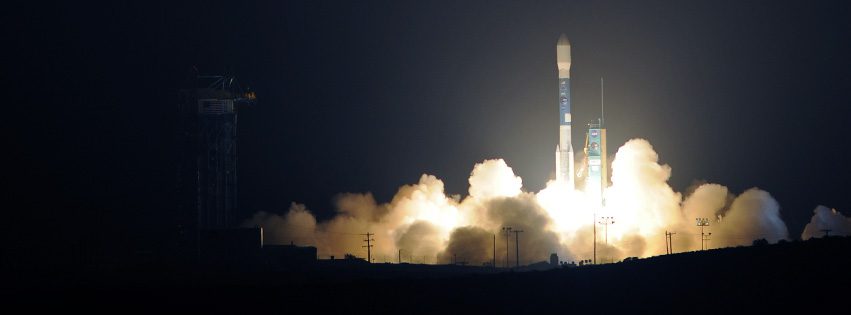
Jim Green, Ph.D., recently named NASA’s chief scientist, will provide insight into the space agency’s historic mission to Mars during a community lecture at Allan Hancock College on Tuesday, May 1. The free event will start at 7 p.m. inside the Marian Theatre on the college’s Santa Maria Campus.
Staff Report
Central Coast residents will be able to learn about NASA’s upcoming historic mission to Mars from NASA’s chief scientist who oversaw successful missions to Pluto, Mercury, Jupiter and Mars. He even consulted on the hit blockbuster The Martian and had an asteroid named after him in 2017.
Allan Hancock College will host Jim Green, Ph.D. for an exclusive presentation on Tuesday, May 1. Earlier this month, NASA named Green its chief scientist. The lecture is free and open to the public. It will start at 7 p.m. in the Marian Theatre on the college’s Santa Maria campus, located at 800 S. College Drive.
Green has served as NASA’s director planetary science division for 12 years and was promoted earlier this month to the space agency’s chief scientist. He officially starts his new position the day of his event.
“This is a once-in-a-lifetime opportunity for people to hear from the world’s expert in planetary science and learn about NASA’s InSight mission to Mars,” said Richard Mahon, academic dean at Hancock. “The college is honored to host NASA and Dr. Green.”
Since becoming NASA’s director of planetary science division in 2006, Green oversaw several successful missions including: the New Horizons probe to Pluto; the MESSENGER probe to Mercury; the Juno probe to Jupiter; the launch of Grail A and B to the Moon; the Dawn probe to Vesta; and the landing of the Mars Science Laboratory and Curiosity rover on Mars.
In prior interviews, Green has tirelessly pushed for Mars exploration efforts.
“Mars has all the ingredients necessary for life,” Green said in a TED Talk in November 2015. “In its past, perhaps two-thirds of its northern hemisphere was an ocean it had liquid water on its surface, it has organics, it has all the right conditions. So what are we going to do next? We’re going to launch a series of missions to begin that search for life on Mars and now is more appealing than ever before.”
As NASA’s chief scientist, Green will represent the agency’s strategic science objectives and contributions to the national and international science communities. He also will serve as principal advisor to the NASA administrator and other senior officials on agency science programs, strategic planning, science policy, and the evaluation of related investments.
Green’s presentation is part of the college’s Mars Week, a five-day period of events and activities to celebrate NASA and JPL’s historic interplanetary mission to Mars. The launch from Vandenberg Air Force Base, scheduled for 4:05-6:05 a.m. on Saturday, May 5, will be NASA’s first interplanetary launch from the West Coast and its first mission ever dedicated to studying Mars’ deep interior. The InSight mission will also be NASA’s first mission since the Apollo moon landings to place a seismometer on the soil of another planet. The mission will use the seismic waves generated by marsquakes to map the deep interior of Mars. Data will help scientists determine the initial formation of the planet and help scientists better understand how other rocky planets formed, including Earth.
Green has worked at NASA since he received his Ph.D. in space physics from the University of Iowa in 1979. He started working in the Magnetospheric Physics Branch at NASA’s Marshall Space Flight Center that provided scientists with access to data. He also served as the head of the National Space Science Data Center, NASA’s largest space science data archive, until he took his current position in 2006.
Green has written more than 150 scientific or technical published articles. Green hosts the popular Gravity Assist podcast, in which each episode he speaks to a fellow scientist about an aspect of NASA’s exploration.
When it comes to people interested in following his career path, Green shared some valuable advice.
“From an academic point of view it is all about doing well in math and science. However, there is no substitute for being determined. Being determined to be successful is at least half the game,” said Green.
As part of Mars Week, NASA will set up interplanetary exhibits inside the college’s Rabobank Student Center on the Santa Maria campus. Visitors will be able to experience space travel and realistic views of planets and the solar system through virtual reality and state-of-the-art computer simulation software. Guest can also learn about the historic launch and see actual meteorites and rocks from the moon. NASA’s exhibit will be open from 12 – 4 p.m. on Thursday, May 3, and again from 1 – 8:30 p.m. on Friday, May 4.
For more information on Mars Week, check out www.hancockcollege.edu/MarsWeek.







